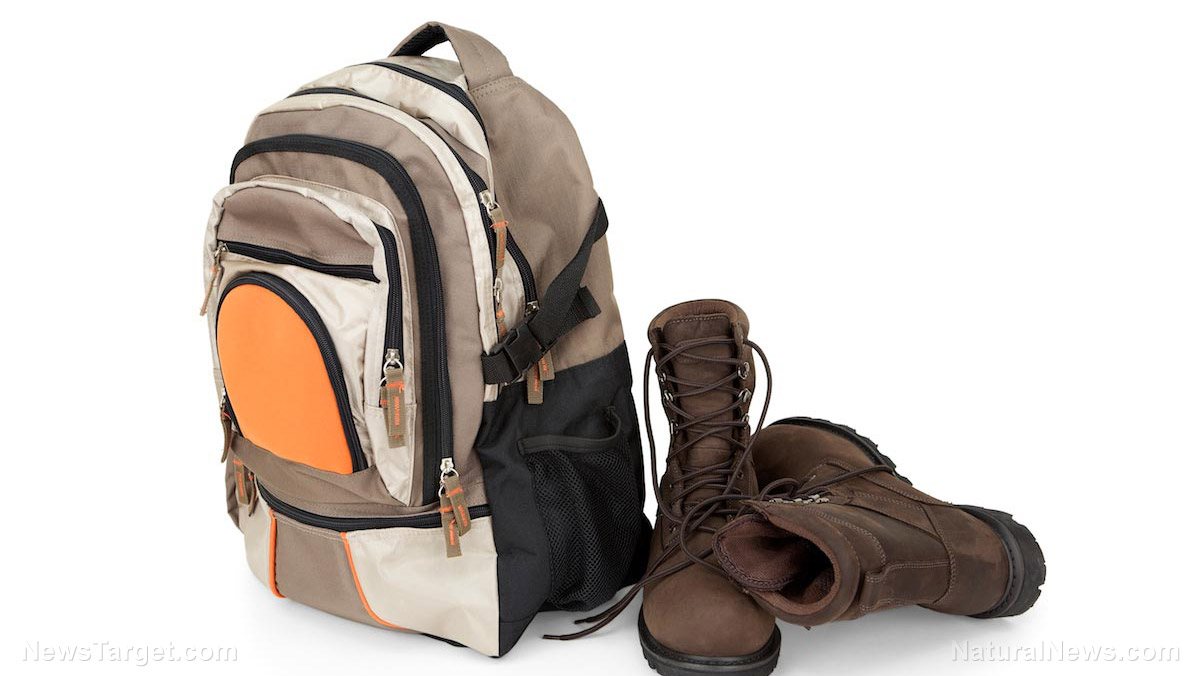
You don't have to break the bank when you're stocking up on survival gear and supplies. Just go to garage sales.
Garage sales are a great place to score cheap survival items that would otherwise cost hundreds of dollars brand new. Plus, most of the things that people drop at garage sales are things that they either no longer use or have space for – not useless junk. This means the things you'll find at a garage sale will likely be in good condition.
Listed below are 10 survival items you can score at garage sales: (h/t to TheSurvivalistBlog.net)
1. Hiking backpacks
Many people buy hiking backpacks and use them only once or twice a year. Eventually, they wind up on the garage sale table.
If you're not particularly concerned with color or style, then a garage sale is a great place to nab a decent hiking backpack at a bargain price. A good backpack is arguably the single most important item a prepper needs because it is what will hold your food, water, first-aid kit, clothes, self-defense tools and other gear.
A small backpack or a satchel could also serve as an everyday carry (EDC) bag or a miniature bugout bag (BOB) that you could take with you whenever you leave the house or take off in your car.
2. Outdoor boots
Considering the cost of new hiking or outdoor boots, it's worth digging through garage sale piles for a good pair of boots. With a little luck, you may find a serviceable pair of heavy-duty work boots. Don't worry if the heels or soles are worn. A quick trip to the cobbler won't cost you as much as a new pair of boots.
3. Blankets
Garage sales are also a great place to score blankets, particularly wool blankets. Wool is an amazing survival fabric as it can keep you warm even when it's wet. This isn't something that synthetic fabrics can do.
Blankets made from wool are now something of a novelty. If you're lucky enough to find one, inspect it carefully first for bugs or moths before buying it.
4. Outerwear
If you live at a place that regularly endures harsh winters, then expect to find cold-weather clothing at garage sales. These can include anything from parkas to wool or wool-blend winter coats and jackets.
5. Camping gear
Camping supplies, such as tents and sleeping bags, are some of the easiest things to find at garage sales. People buy them all the time, use them once then leave them in their garage or attic for years collecting dust. As such, it's typically safe to assume that camping supplies you'll find at garage sales have only been used once or twice.
6. Cast iron cookware
The best type of cookware to have in a survival situation is cast iron. If you need to cook over an open fire, your ceramic or aluminum cookware won't cut it. You want something rugged but durable. (Related: Survival cooking: How to make and preserve bone broth.)
Brand new cast iron cookware is expensive. Even old ones sold in antique stores can cost you a good amount of money. Fortunately, garage sales are one of the best sources of old but serviceable cast iron cookware. Don't worry if you find grimy ones because they stand up well to vigorous scrubbing and cleaning.
7. Fishing gear
Fish is much easier to catch than wild game as long as you have the right tools and a bit of skill. Fortunately, fishing poles, tackles and other gear can be bought for cheap prices at nearly every garage sale.
8. Lanterns
Camping lanterns, particularly the kerosene- and alcohol-fueled ones, are more reliable than their battery-powered counterparts. They can provide plenty of light when needed but can also be dialed down to save fuel or provide only a little light. Keep an eye out for camping lanterns at garage sales in your area.
9. Hand tools
In a survival situation, you'll need hand tools to build shelter, clean fish or wild game, make hunting snares and do other vital tasks. Because many people are switching to power tools these days, it's likely that you'll find all kinds of hand tools in garage sales. Make sure to cover the basics — saw, pliers, hammer, wrench, utility knives, shovels and screwdrivers.
10. Bows and crossbows
Preppers understand the value of a ranged weapon, such as bows and crossbows, for self-defense and hunting. Fortunately, such weapons usually turn up at garage sales, especially in hunter-friendly places.
If you want to save money on survival tools and supplies, take advantage of garage sales in your area.
Sources include:
Please contact us for more information.





















